How To Make A Sorbet Without A Recipe
And a recipe for a gorgeous spiced plum sorbet
🎉 Welcome to my newsletter, The Boy Who Bakes, a subscriber-supported newsletter, dedicated to all things baked. This is a post for free subscribers, who receive ocassional posts and recipes. You can become a paid subscriber to get access to exclusive weekly recipes and to get access to the archive including every recipe posted on the newsletter. It costs just £5 a month and that helps me continue writting this newsletter. To subscribe, to either the paid or free newsletter, click the link below.🎉
Hello, Happy Friday!
Today's newsletter includes a recipe for sorbet and a cool trick that shows you how to make a sorbet without actually following a recipe. This particular sorbet is made with plums (leftover from my boyfriend's birthday cake) with some vanilla and star anise as background players.
But, before we get to the recipe, just a quick reminder that we are now less than a week away from the publication of my new book Small Batch Cookies. This also means you have just less than a week to pre-order a copy and enter my huge pre-order giveaway (which you can enter here on Substack or here on Instagram). I am so excited for all of you to finally see the book. I’ve been carrying around a copy for the last couple months, taking it everywhere with me (including on holiday to Crete), and soon it will be your turn to enjoy the book and to bake all of the delicious cookies the book contains. If you're planning on buying the book anyway, pre-ordering a copy before the official release next Thursday really helps give the book a great launch, and it would also make me incredibly grateful. The North American release is in a month on Sept 24th, and I am very excited that I will very soon be announcing a US book tour with a lot of exciting events coming up!
But now, back to our regularly scheduled newsletter. At its essence, sorbet is simply a mix of water and sugar. When this mixture has the right balance of sweetness, you create a syrup with a low enough freezing point, which creates a sorbet that is smooth and without large ice crystals, scoopable straight from the freezer, and pleasant to eat. If the syrup is too high in sugar, it won't be able to freeze at all (sugar doesn’t freeze) and will be loose and slushy even after hours in the freezer. If the syrup has too little sugar, the sorbet will freeze like a block of ice and will be unpleasantly icy.
The perfect sorbet is made with a syrup that is about 20–30% sugar. With water and sugar, this is obviously easy, but when you add in a fruit puree, judging, this is much trickier. When talking about the sugar in sorbet, I am referring to ‘total sugars’ not just ‘added sugars,’ so the fruit, which contains naturally occurring sugars, makes calculating the right amount to use much more complicated. Professionals use a tool called a refractometer, which can measure the concentration of sugar in a given liquid. Unless you want to buy one of these fancy tools, what are your other options? Remember when I said I would teach you a cool trick to make sorbet without a recipe? Well, that cool trick is an egg. Yes, you read that correctly, an egg. When you’ve made a sorbet base, a mixture of fruit puree and sugar, you can measure its sugar content by dropping in an egg. How the egg floats tells us how much sugar is contained.
Take your finished sorbet base and gently drop in an egg. If the egg sinks and it cannot be seen above the surface, the sorbet does not have enough sugar. Add a little extra sugar syrup and stir to combine. Redo the test with the egg, and this time you should hopefully find the egg floats just enough that a small circle appears above the surface of the sorbet base, a circle about an inch in diameter. This little trick means you can make a sorbet without a recipe, making a fruit puree and some simple syrup and combining the two until it passes the egg test. It really is genius, and I wish I could tell you I came up with this, but someone much cleverer than I deserves the credit, although I cannot figure out who actually came up with it.
In this recipe I wanted to add a little extra flavour, so instead of making the sorbet exactly as mentioned above, I varied the method slightly so I could add extra flavourings. I add plums, star anise, and vanilla to a saucepan and pour in water and sugar. This is then cooked down for about 20 minutes before being pureed and strained. At this point I performed the egg test and added a little extra sugar syrup until it passed with flying colours. The resulting sorbet was incredible, scoopable straight from the freezer, and vibrant in both colour and flavour without being too sweet.
Plum Sorbet with Vanilla and Star Anise
600g plums, diced (about 10 plums)
2 star anise
1 vanilla pod
100g caster sugar
250ml water
Juice of 1 lemon
Sugar Syrup
100g sugar
100ml water
Add the plums to a large saucepan and toss in the star anise. Cut the vanilla pod in half and scrape out the seeds, adding both the pod and seeds to the pan. Add the sugar and water and give everything a good stir to combine. Place the saucepan over medium heat and bring to a boil. Reduce the heat to low and cook at a gentle simmer for about 15-20 minutes until the fruit is almost entirely broken down, the liquid has reduced a little, and the mixture is a little syrupy. Remove the star anise and the vanilla pod, and then use either a blender to puree the syrup. Stir in the lemon juice and then set aside until cool.
Make a quick simple syrup by combining the sugar and water in a small saucepan and bringing to a simmer. Once the sugar has dissolved, pour into a jug and set aside until needed. You won't need all of this syrup, but the leftovers come in very handy for moistening cake layers, used in cocktails, or even to sweeten your iced coffee. You can also add a little vanilla bean paste to make a quick and easy vanilla syrup.
Once the sorbet base is cooled, pour it into a large jug and carefully drop in a fresh egg. The desired result is to have the egg float above the surface just enough so that a circle about an inch wide is showing. If the egg is under the surface of the sorbet base, pour in a little extra syrup, stir to combine, and repeat the egg test. Once you have a base that you are happy with, refrigerate it overnight before churning. Thoroughly chilling the base means it will churn faster, giving the finished sorbet a less icy texture.
Using an ice cream machine, following the manufacturer's instructions, churn the syrup until the sorbet has an almost soft-serve like consistency. Scrape into a loaf pan or other freezer-safe container and then cover before freezing for at least four hours before serving. Homemade sorbet keeps for a shorter period of time compared to shop-bought sorbets (which are made with the help of commercial stabilisers), so consume within a couple weeks for the best texture and taste.


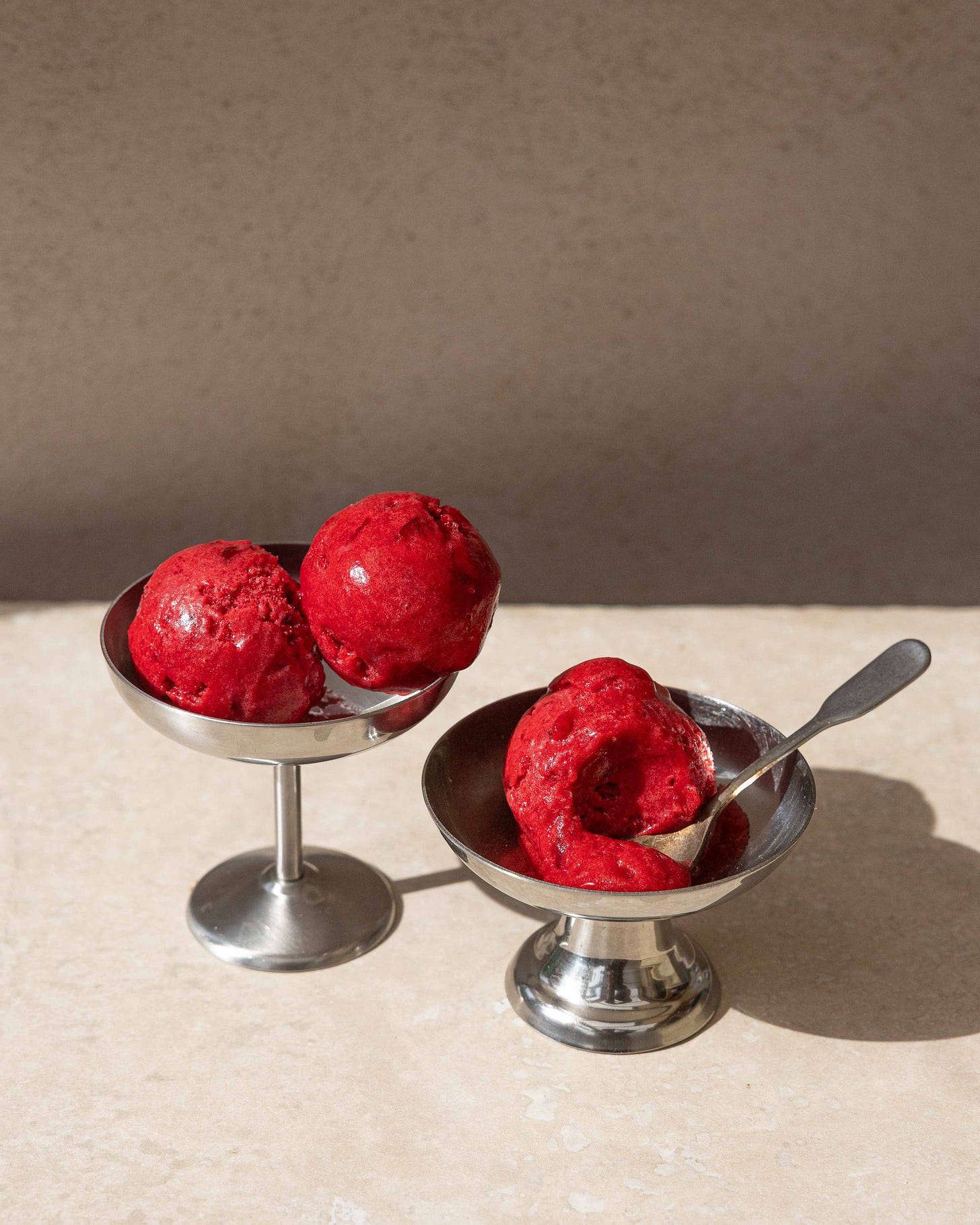
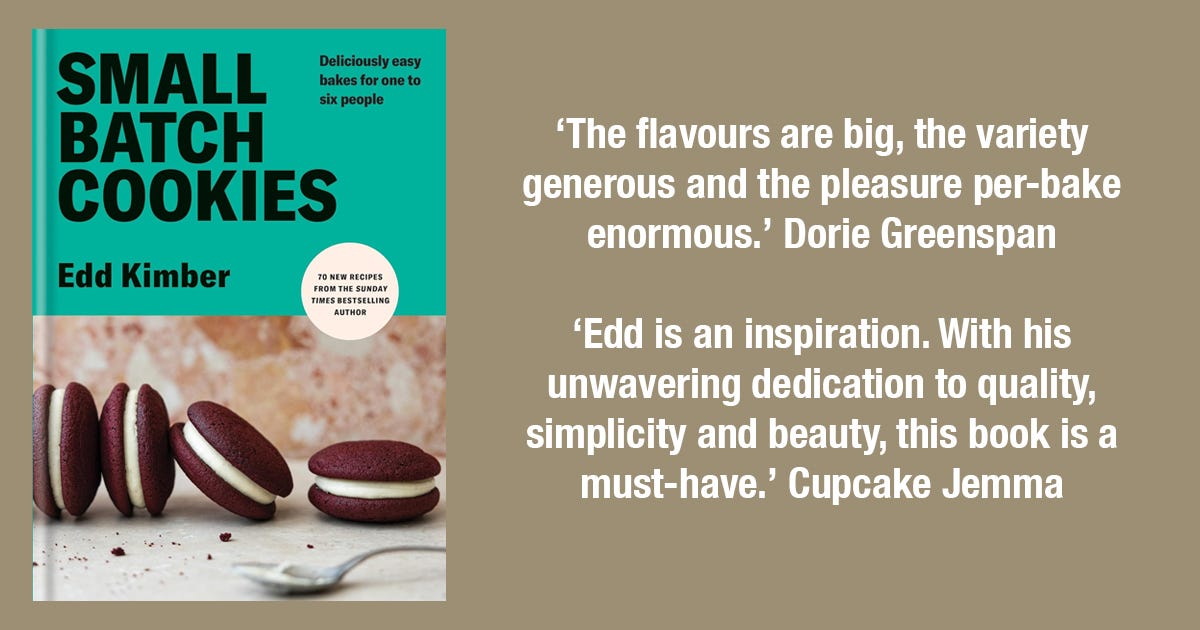
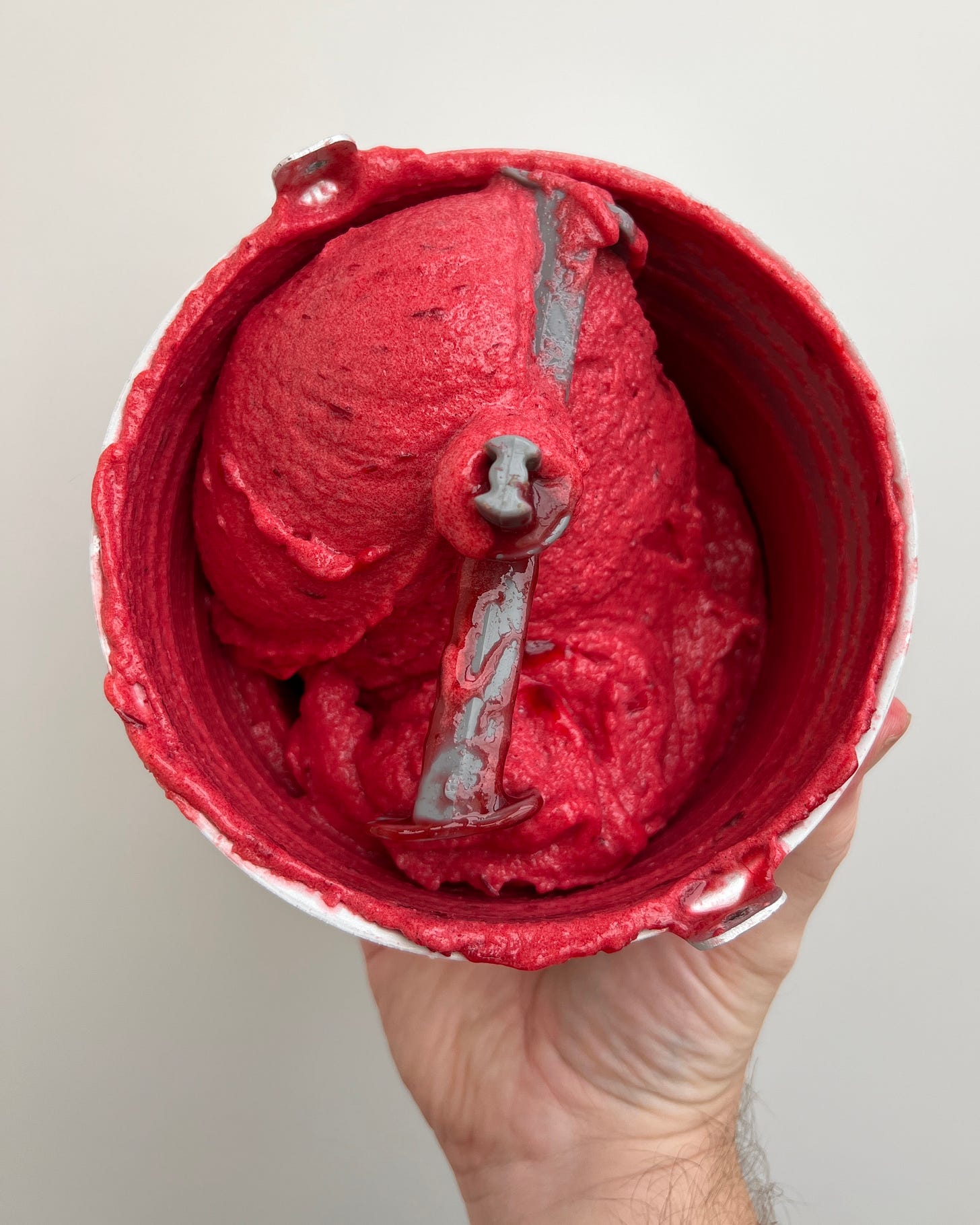
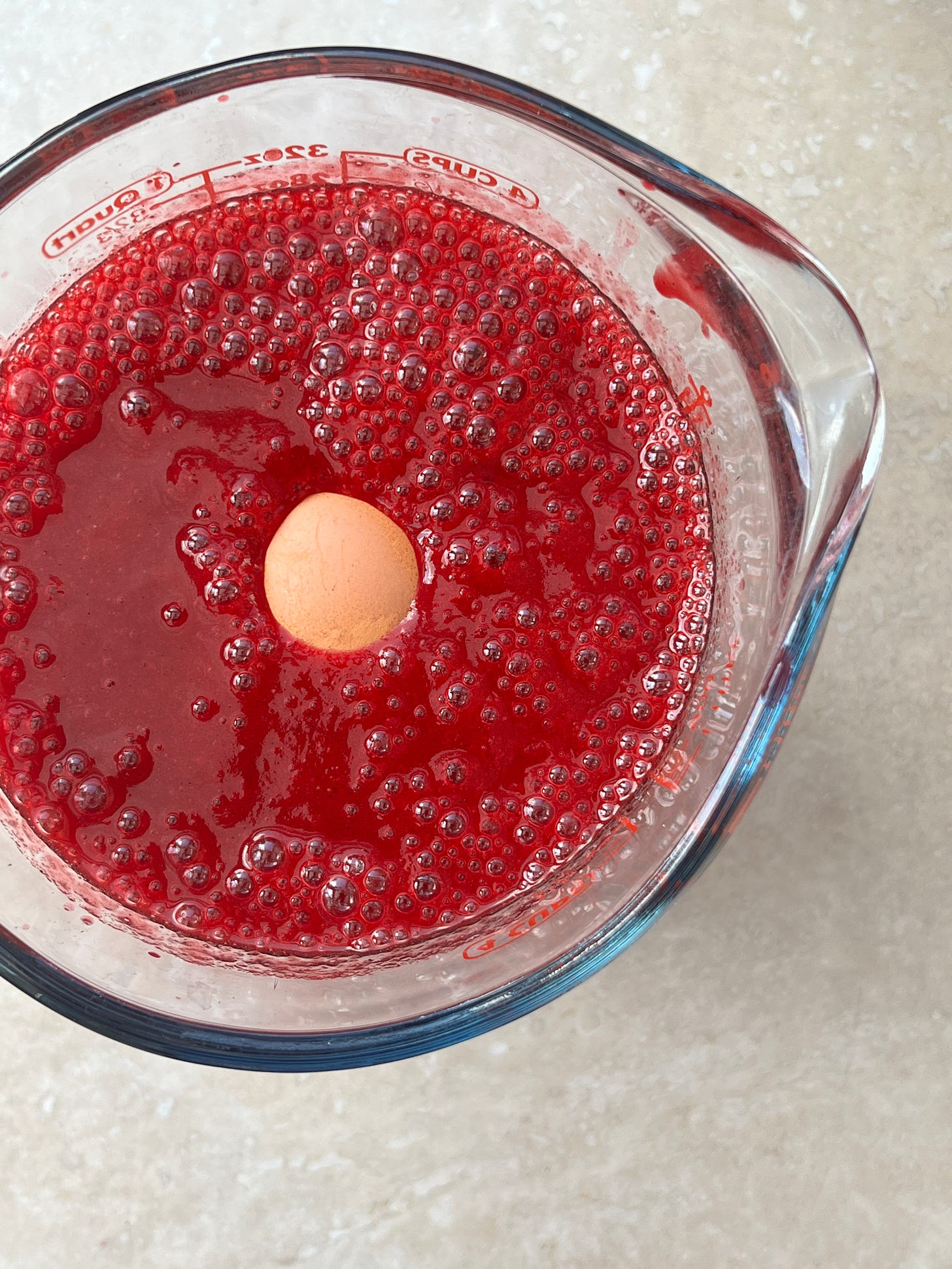
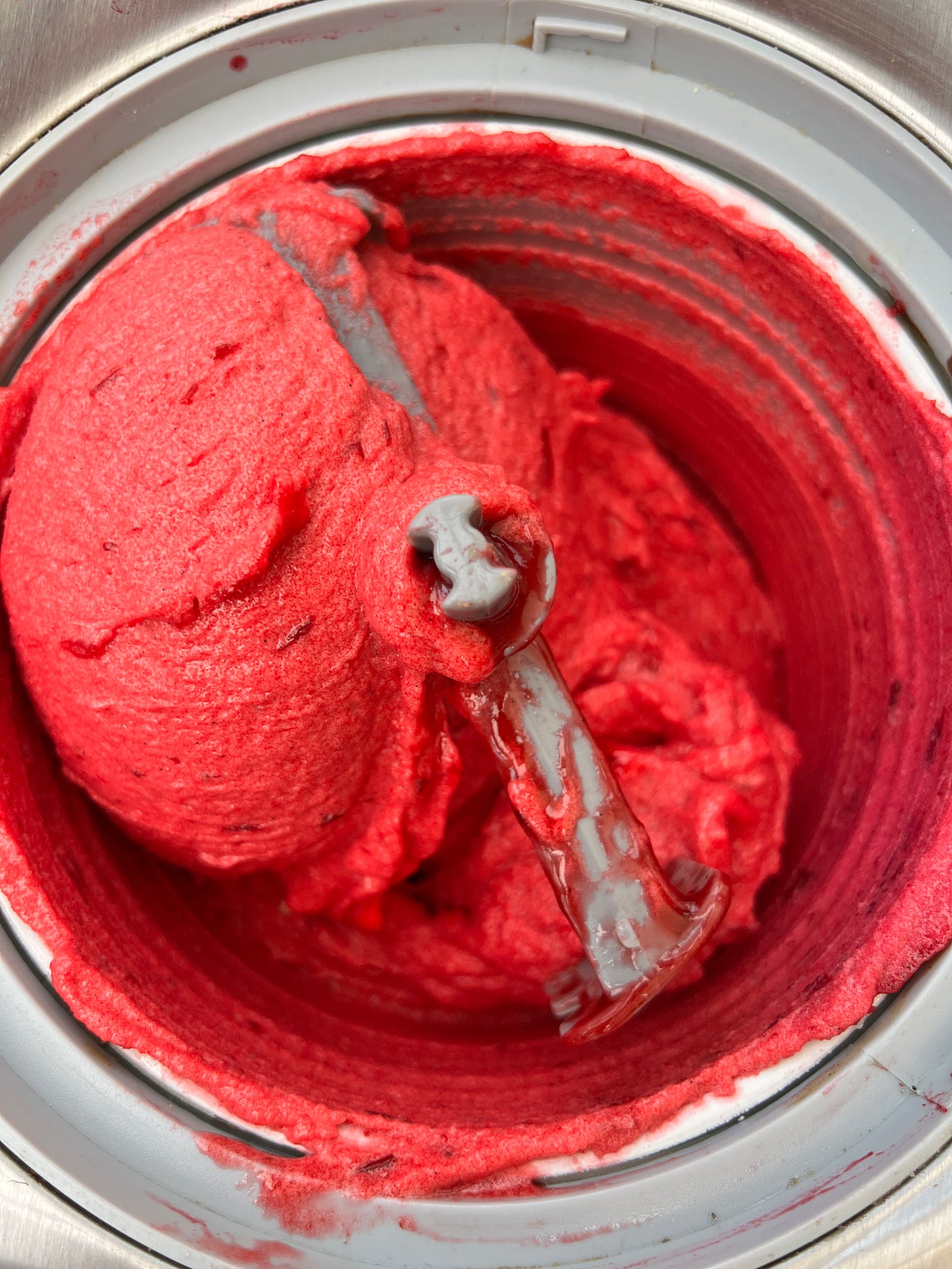
What a tip! Thanks!
I will use this trick with others and mesmerise them with my practicality 😃
I cannot wait to try this! Brilliant, thank you!